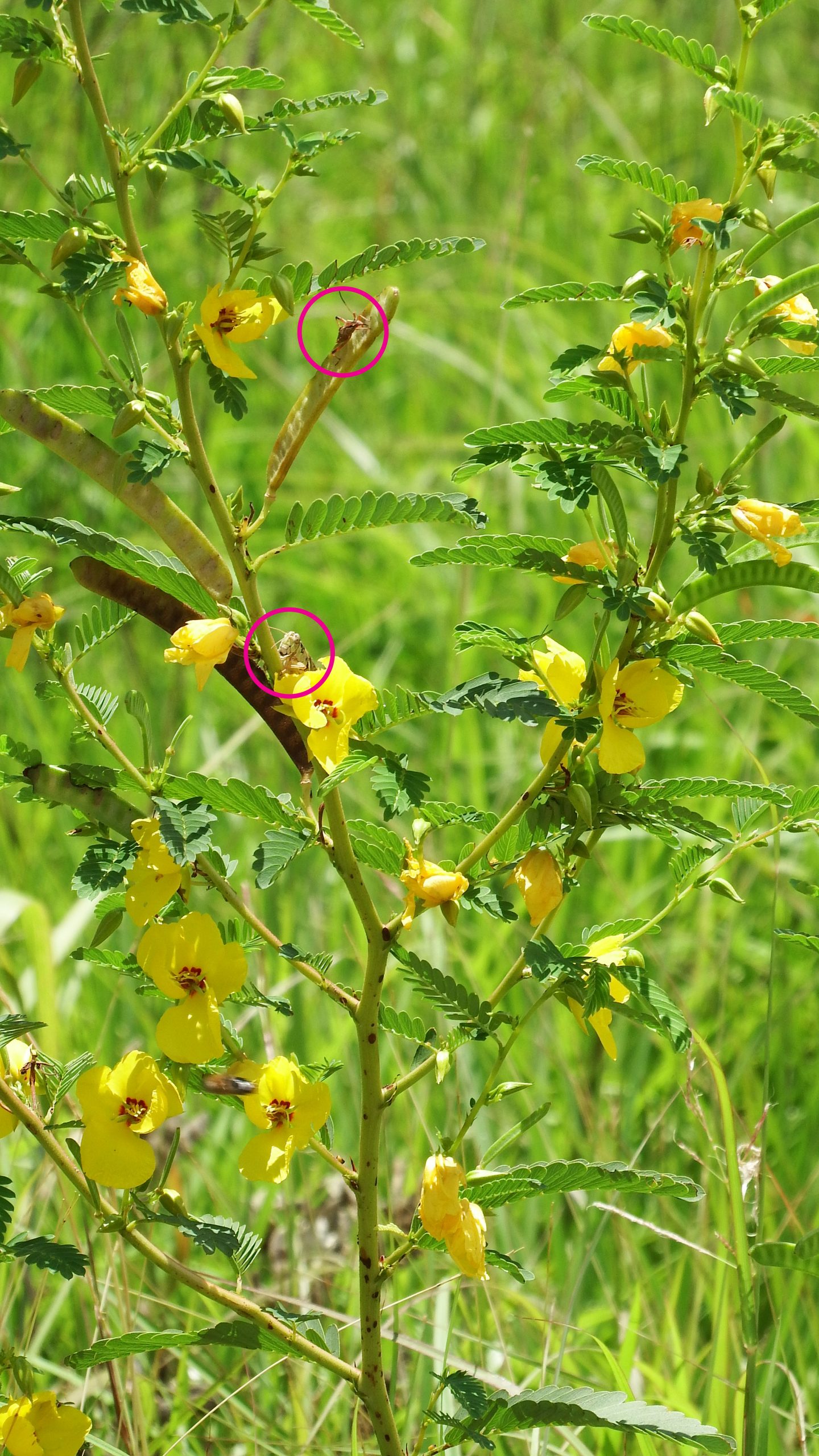Hot Spot
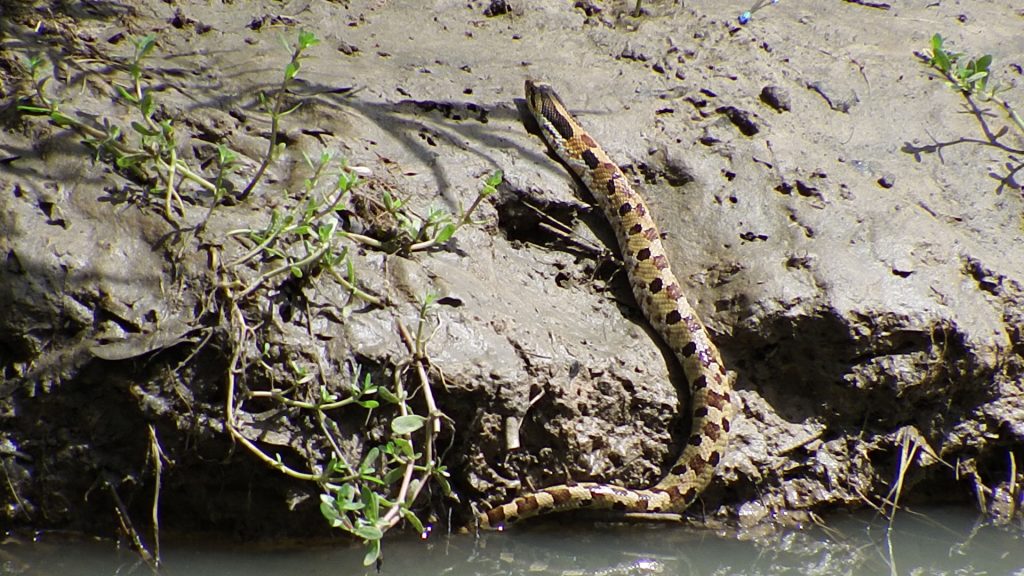 Free food! Hang that sign in front of a restaurant and the line will be around the block in no time. This is, of course, a terrible business plan. But it does illustrate a universal truth: everyone wants to eat and the less money or energy expended the better. Places full of food tend to draw eaters and places full of eaters and food tend to draw naturalists. We know all the best spots to dine.
Free food! Hang that sign in front of a restaurant and the line will be around the block in no time. This is, of course, a terrible business plan. But it does illustrate a universal truth: everyone wants to eat and the less money or energy expended the better. Places full of food tend to draw eaters and places full of eaters and food tend to draw naturalists. We know all the best spots to dine.
Best place to see black-crowned night herons is under the bat bridge. They are waiting for baby bats/swallows to fall into their waiting mouths. Yellow crowned night herons are on the Greentree trail that’s the best place in the Park to find crawdads, their favorite food. The little inlet leading into Greenwood Cemetery is beloved by herons and egrets (although less so lately and I’m interested in why). Mid-sized fish were abundant there.
The Park has other hot spots where I don’t understand all the mechanics as well. Most of these hot spots are somewhat hidden. But one of the best is right out in the open. This spot is a storm-water inflow basin opposite the Federal Reserve Bank building on Taft.
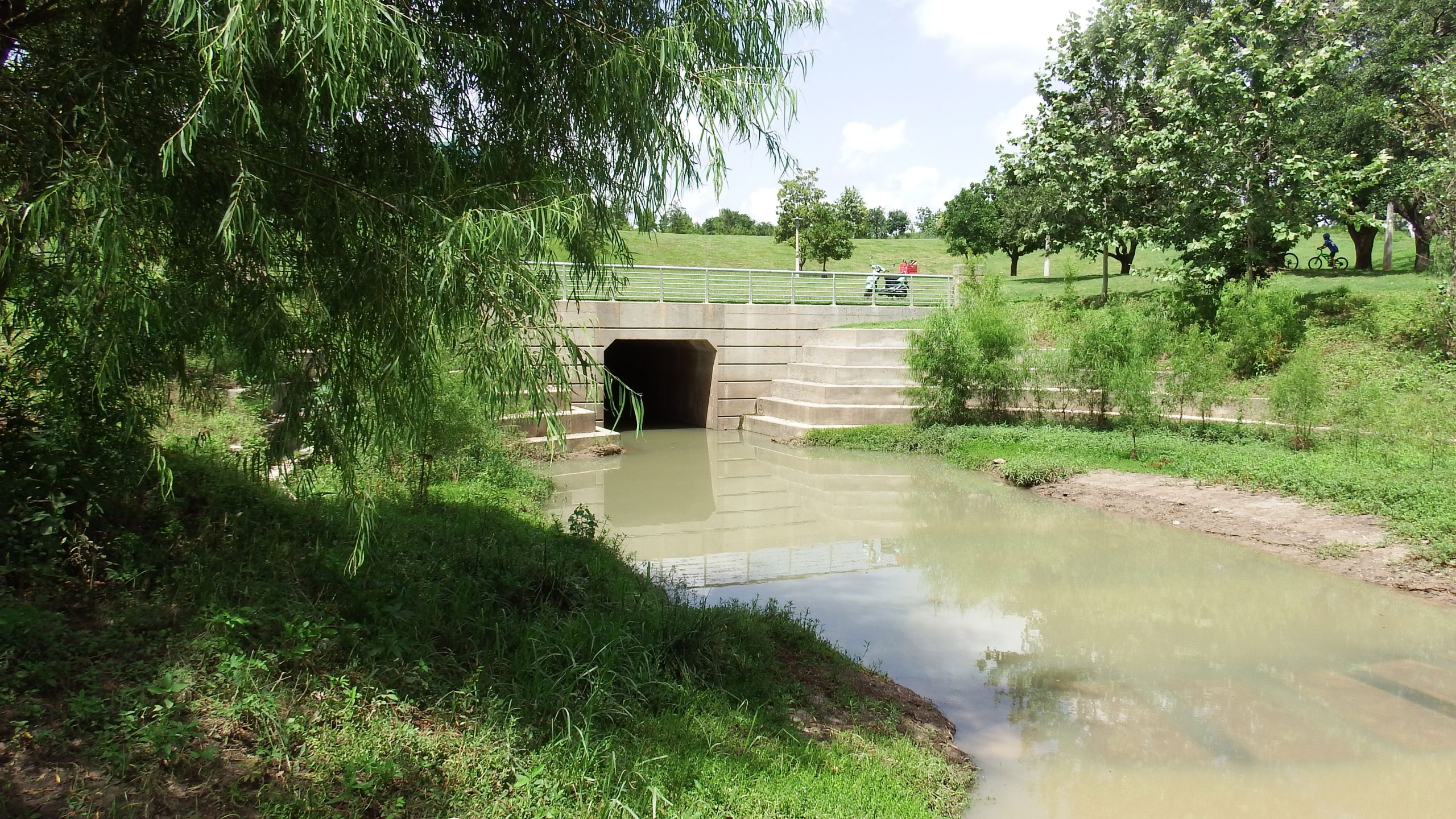
I have found beavers (damage and tracks), an egret that waded in up to her chest, endless turtles and small fish. When I am looking for a blog post and nothing jumps out at me, I head to a hot spot. Monday, it was here and boy was that intuition rewarded.
I don’t know exactly why this spot is so full of life. There are tons of tiny translucent fish. Why they hang out there I don’t know. It is protected from the main flow of the bayou, but when rain has been scarce, the entire place will dry up. So I don’t know where they go when that happens.
I have seen the bottom bubbling. I got so worried at one point that I made repeat visits, worrying about a gas leak of some kind. I still don’t know if the bubbles were caused by rotting vegetation (one of my theories) or lots of small turtles, which seems less likely but might be more realistic.
Monday, within less than an hour here’s who wandered by my hot spot:
Let’s start with the most exciting. An eastern hognose snake slithered off the south bank, swam across the narrow channel and slithered out on the north bank. This is probably the most beautiful snake I’ve photographed in the Park. Also one of the most frustrating to identify.
I saw this snake swim. You will too in the video below. In my mind, that made it a water snake. But I couldn’t find any water snakes that looked like this. I posted it to iNaturalist where it was immediately identified as an eastern hognose snake. But I saw it swim!!!
In my consultations to identify everything I saw, I reached out to fellow master naturalist Julia Trimble, a true critter woman. She wasn’t as surprised as I was about the aquatic land snake. She told me in a wonderfully matter-of-fact way: All snakes can swim. Some prefer the water more than others. My sister says she will now stop swimming entirely!
I should issue a disclaimer right here and now. Snakes are not dangerous as a rule. On average, five people die of snake bites in the U.S. annually. More die from dog attacks. I wrote a whole post on snakes a while ago. To summarize here, stop being scared of them!
When I started researching how much eastern hognose snakes like to swim, I found a reference to one two miles out at sea spotted by a whale watching boat. Everyone thinks that snake just got lost, but it did make it two miles and was still swimming last it was seen.
In the video, watch the snake’s tongue once it hits land. It immediately starts flickering. That is our snake really checking things out. Snakes smell with their tongues. Actually, they collect scent molecules on their tongues and deliver them to an organ at the back of their mouths called a Jacobson’s organ. It detects scent and pheromones. In the same way our two ears help us locate sound and our two eyes allow for depth perception, the snake’s forked tongue (two tongues!) provide location information along with scent. Our friend is either actively hunting, looking for a mate or worried that he/she’s not the only snake in the area!
This next critter is actually the first one I saw and the reason I stopped. It is a strange turtle. We have a lot of turtles in the Park, but they are all either red eared sliders or spiny soft shells, and I hardly ever see the soft shells anymore. If you see a turtle in the Park, it’s almost a guarantee that it’s a red eared slider. But this one was all black. That’s not a red eared slider! Except, after careful consultation with yet more herpetology experts, this is actually a red eared slider. A melanistic red eared slider.
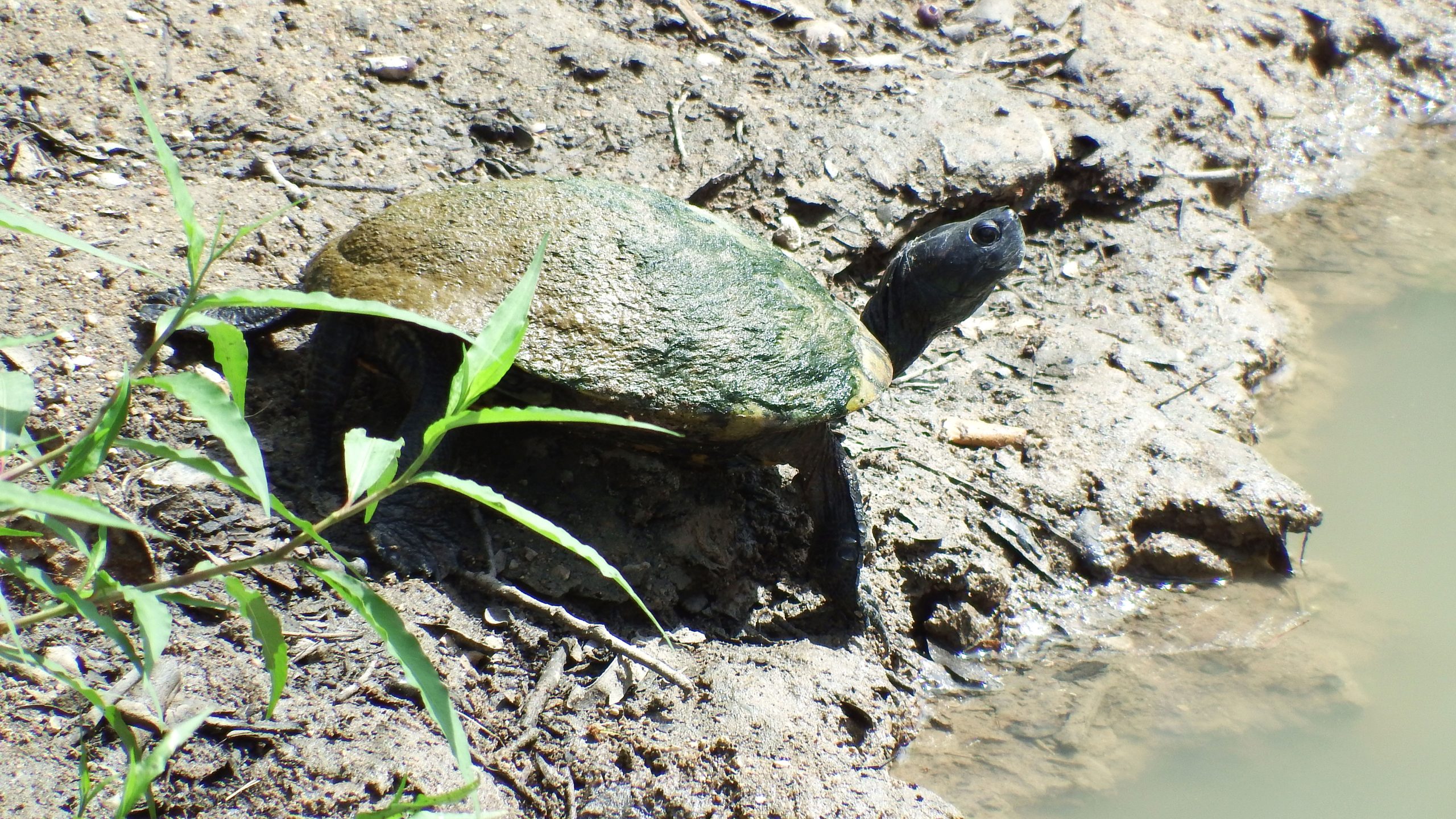
Melanism is cool. It’s sort of reverse albinism. Instead of having no pigment, a melanistic animal will appear all black. Worth a google to see what melanistic animals look like. Or, you can just look at this turtle, who’s actually just like every other turtle in the Park except this one took an entire day and several people to be pronounced an uncommon common red eared slider.
I would like to thank Kelly Norrid of Texas Parks and Wildlife for helping me with the very tricky turtle id.
I almost missed this next action. At first, I thought I was seeing a shadow or submerged branch. But I got my camera focused on it anyway and surprise! It’s a spotted gar. Spotted gar are smaller than alligator gar which we also have in the bayou. Alligator gar can get over a hundred pounds and reach 10 feet. Spotted gar top out at two or three feet. In this video, the gar rises to the surface and at first I thought I had videoed him catching a fish. But going over it in slow motion, I can’t find a fish for him to eat. I caught him breathing! Gar can live in slow moving shallow water even though this water is often poor in oxygen. The way they cope is with a gas bladder that acts like a primitive lung. Gar gulp air and send it to a gas bladder. Behold a fish taking a breath.
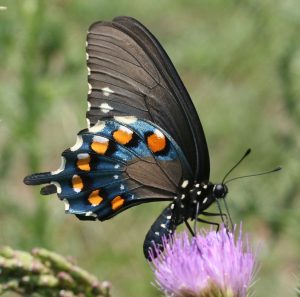
Pipevine swallowtail for reference. This is not the butterfly I saw. Except on Wikipedia, which is where the photo comes from.
You would think this many things would be enough for a hot spot and an hour, but there was even more. A butterfly came along and everything about it was wrong. On first glance, it’s obviously a swallowtail. Probably a pipevine or spicebush. But I have tons of pipevine swallowtails in my yard and this one was wrong. It kept landing and staying still. As we know from a post a few weeks ago, all swallowtail butterflies flutter when on a flower. This one landed with spread wings. But it looks so much like a swallowtail that it had to be.
That’s what it wanted me to think, anyway.
Pipevine swallowtail butterflies are toxic. In the same way monarch caterpillars are toxic because they feed on milkweed, pipevine swallowtails are toxic because their caterpillars feed on Dutchman’s pipevines which are toxic. If you look like a pipevine swallowtail, you might just fool a predator who thinks you look tasty!
Meet the red-spotted purple who stays safe by looking very much like a pipevine swallowtail!
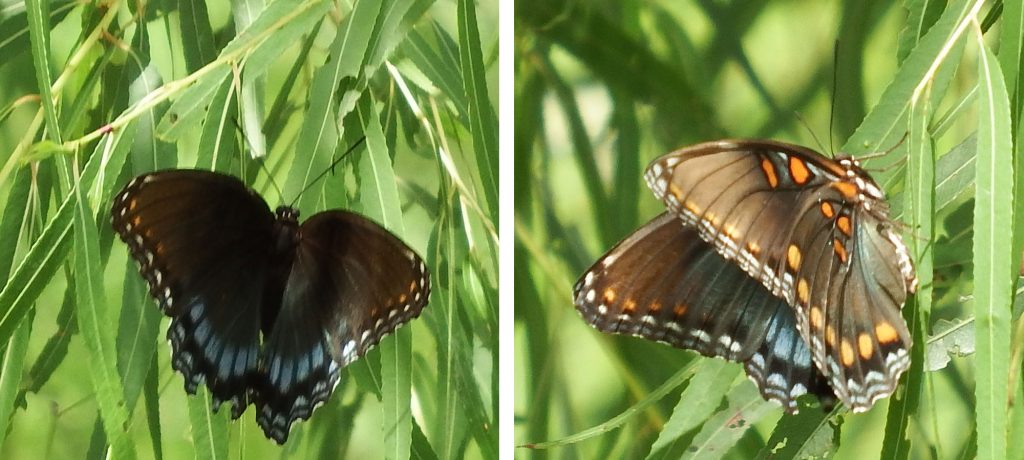
That would be a wrap, but at the last minute, a great blue heron landed and we don’t have that many of them in the Park. I was very glad to have been paid a visit so in return, I invite you to gaze upon her loveliness!
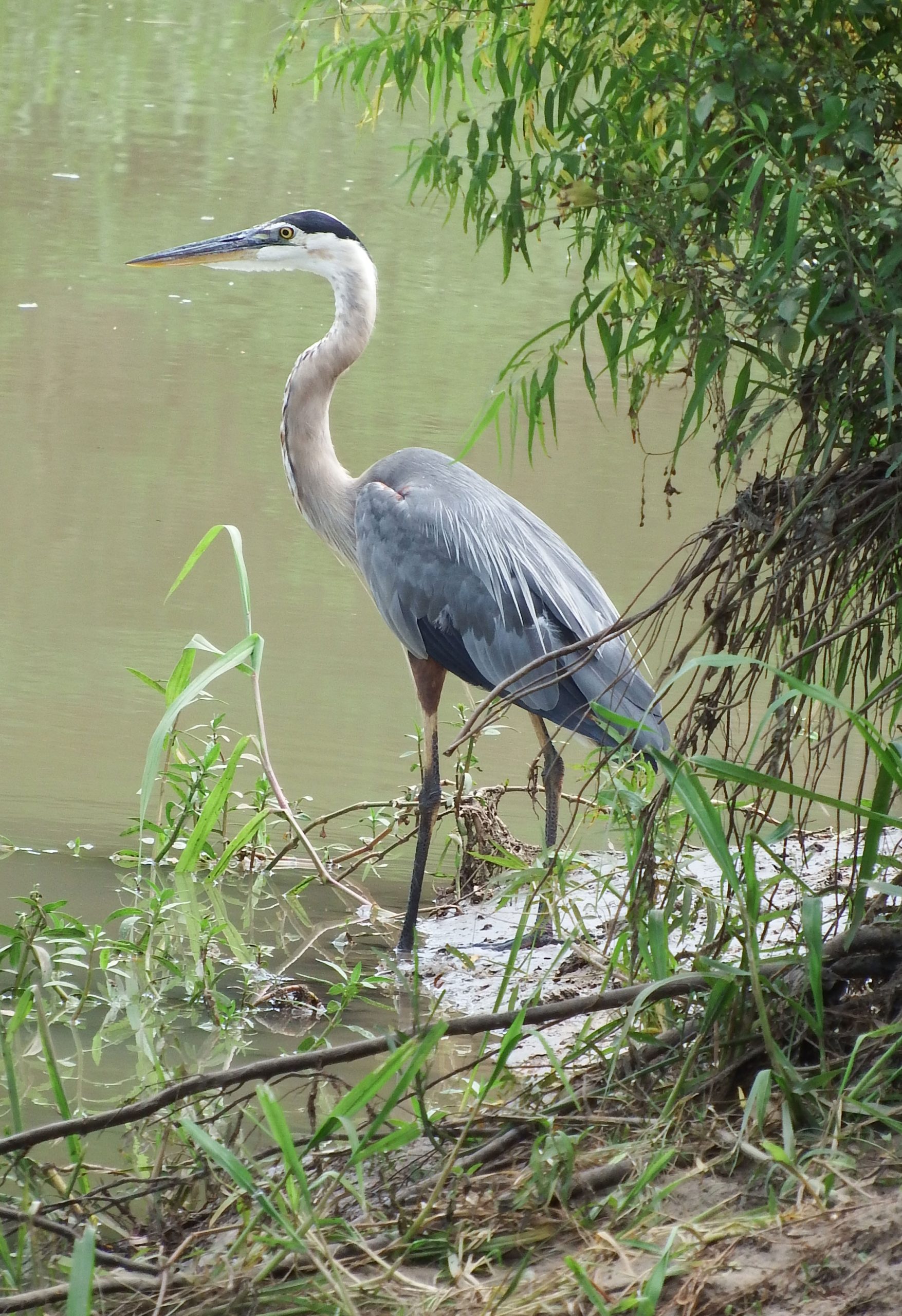
Great Blue Heron
Last week, I posted a photo with hidden insects. Here they are, revealed!
